During the late 1990s, it became fashionable to swap out your motocrosser’s off-road wheels and tyres for 17-inch road rims and rubber, and then head to the asphalt and kerbs of the nearest racetrack. The racing was (and still is) a crazy, hybrid blend of dirt and road that became known as a supermoto and, in time, inspired a plethora of exciting bikes by a variety of manufacturers, prime among them Austrian dirt specialist KTM.
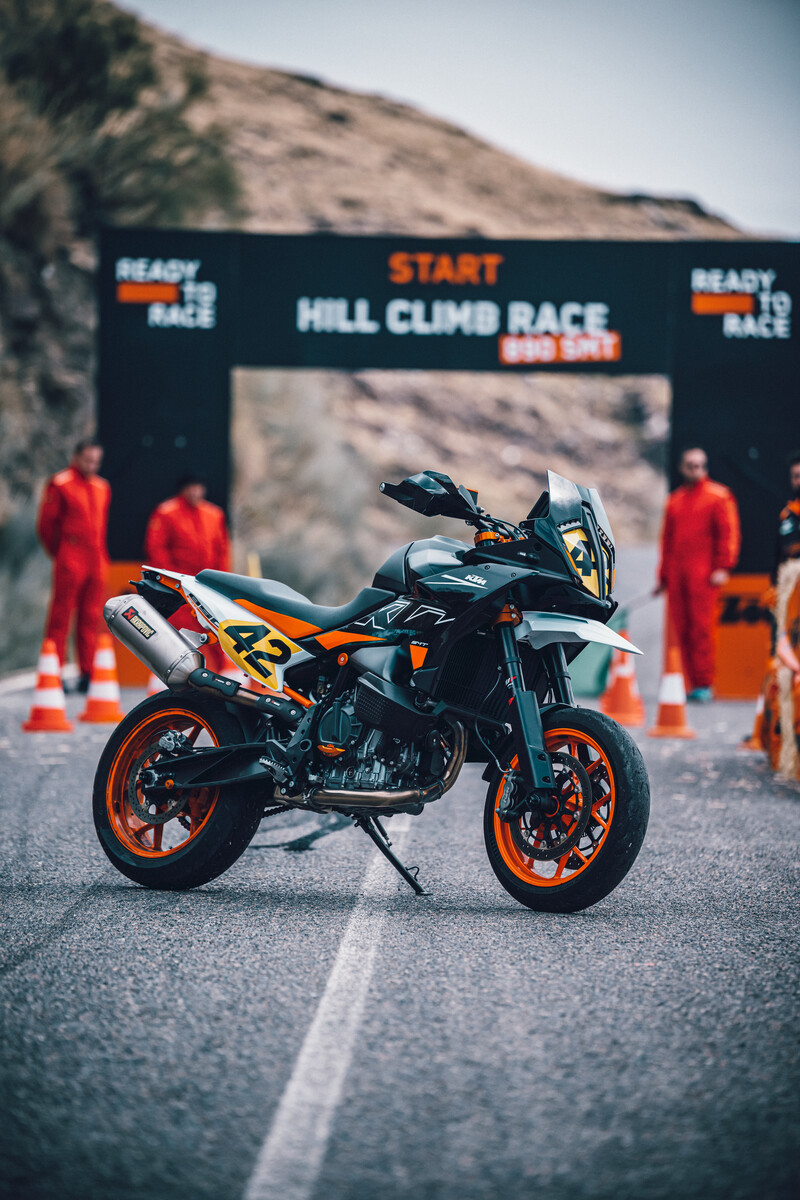
While the majority of production offerings were dedicated, track-focused supermotos – and a whole lot of fun to ride like an idiot – they were also impractical with small fuel tanks, monumentally uncomfortable, relatively crude and only good for going around short, gnarly racetracks really fast. However, in 2009 KTM dreamt up the big-bore long-distance supermoto, the 990 SMT (for SuperMotoTouring), which captured the essence of a supermoto corner slayer while offering a degree of practicality as well.
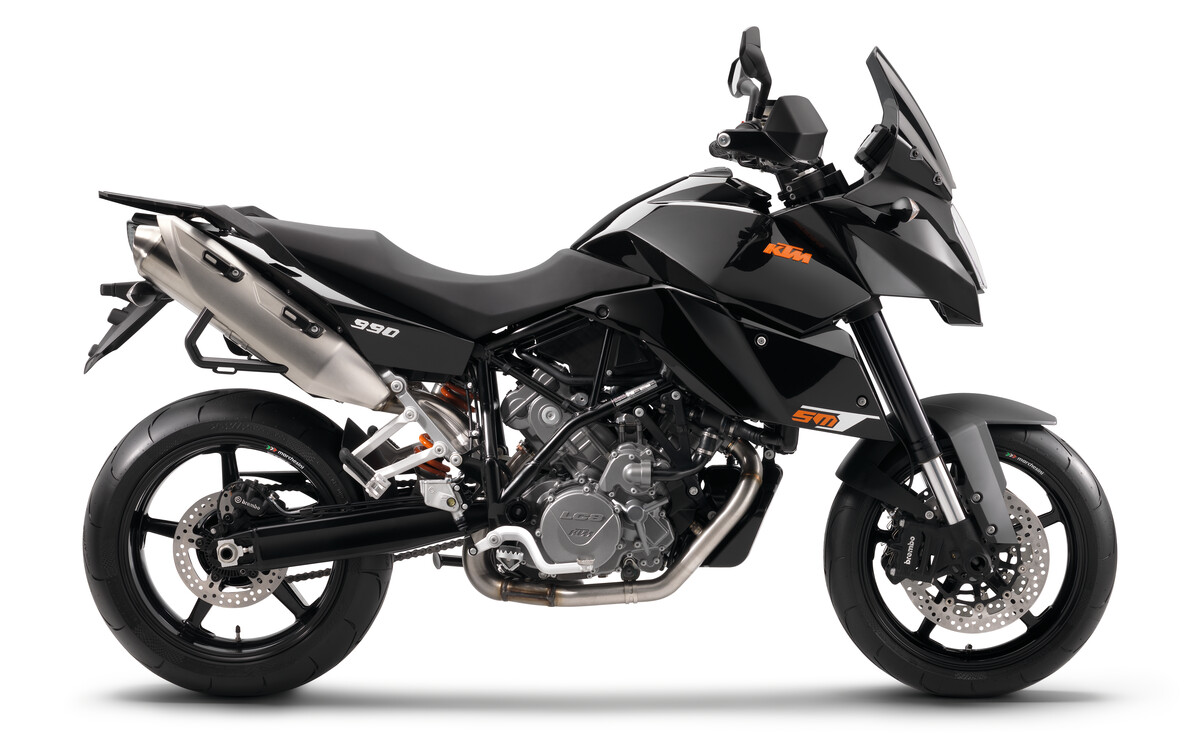
The idea was to create essentially the ultimate sports-tourer; a weekend away one week and keep the sportsbikes honest at the local racetrack the next. And while many of us remember it with great fondness, KTM pulled the plug in 2013 and that was that. Or so we thought. Because now, a decade later, the SMT is back for 2023.
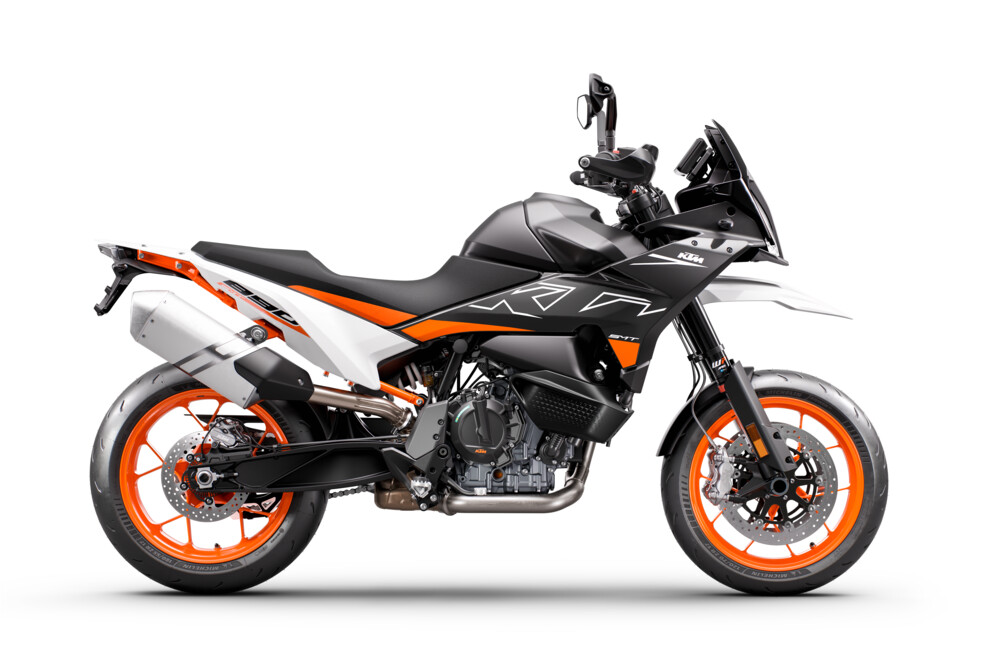
Depending on how you view the world, the reborn KTM 890 SMT sits somewhere between a pumped-up supermoto and a stripped-back adventure bike – or, if you know your KTMs, between the 890 Adventure and 890 Duke. KTM’s thinking is that despite the adventure bike revolution of the last decade and more, most owners rarely stray further off-road than a dusty trail, so why not install sticky Michelin PowerGP rubber and 17-inch rims instead and have some fun?

The SMT also features road and track-focused ergonomics plus street-oriented WP Apex suspension to help deliver tauter, sharper handling than, say, the dirt-aligned Adventure. It’s still tall and commanding like an adventure bike, and still has a long, deep, 860mm-high seat that caters to big miles for both rider and pillion.
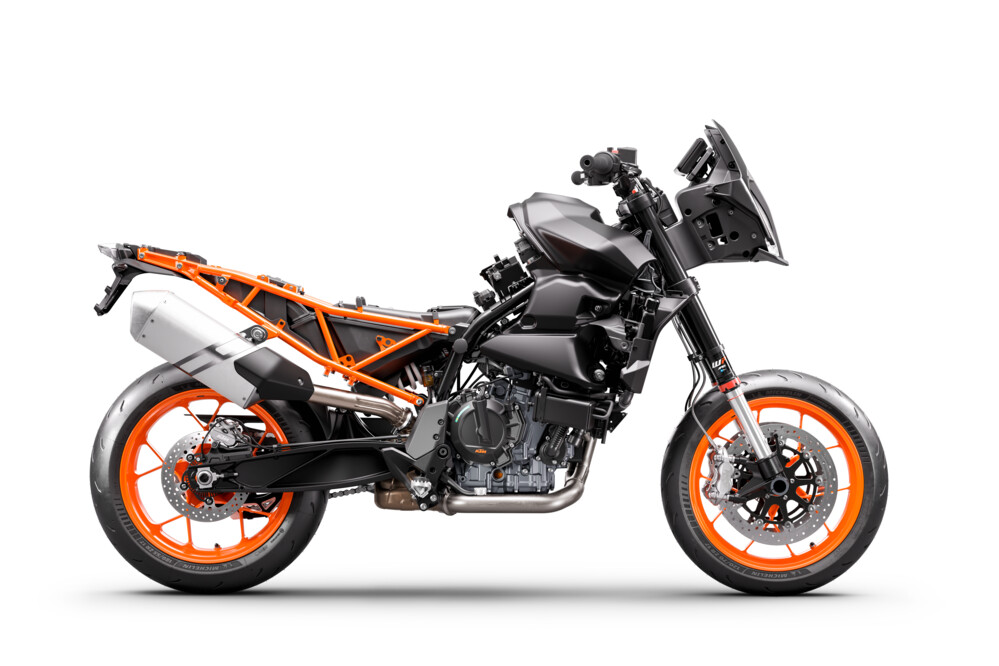
Like the original SMT that found a cult following, it’s suffused with a racy attitude and also a craving for weekends away. At its heart, however, is now the second-generation 889cc variant of the multi-purpose LC8c parallel-twin, which, in one guise or another, propels an ever-growing number of middleweight Austrian machinery, as well as the odd Husqvarna and CFMoto too.

This is a good choice. KTM could have slotted in the 890 unit deployed in the 89kW (119hp) Duke R, but instead opted for the Adventure-spec twin because it produces more torque below 7500rpm. Peak outputs of 77kW (103hp) at 8000rpm and 100Nm of torque at 6500rpm, along with 20 percent more rotating mass compared to the earlier 799cc design, make for a well-blended mixture of midrange grunt and free-revving spirit – exactly what a supermoto with an eye on the far horizon requires.

The SMT’s launch venue of Sardinia proved an ideal environment, with the island’s endless ribbons of sweepers and switchbacks seemingly made for the KTM, and the company even treated us to a closed-road hillclimb, with no speed limits and no rules… With instant throttle response, it drives purposefully from just 2000rpm, gaining venom as the revs build. It’s not a big engine but it is supremely lively; the SMT punches between braking points, as happy to be short-shifted at 8000rpm using the smooth (though only optional) quickshifter as it is to rev on beyond its 10,000rpm peak. The on-paper power may not impress everyone, but the way it delivers power will.
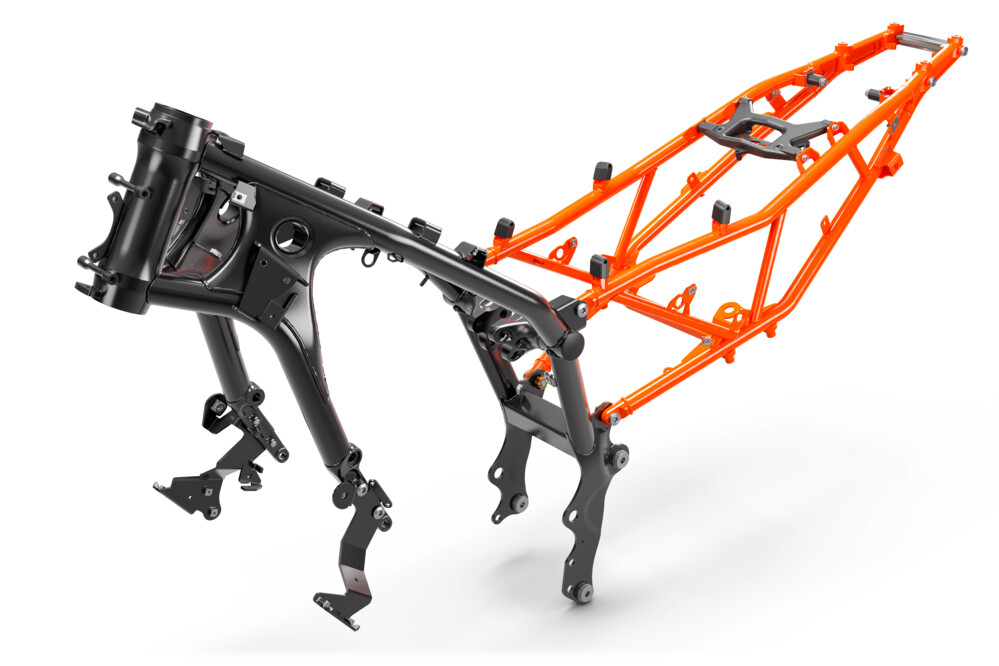
There’s a full house of ride modes – Rain, Street and Sport, with the option of a Track setting – and the power is managed by a cornering traction control system. Turn down the traction control to zero in Track, or turn it off at a standstill without the extra mode, and wheelies are inevitable, just as they always were on the original SMT, in first, second, third and even fourth gear.

A key difference between the old and new SMT, however, is that away from the switchbacks and sweepers the fueling is now as precise as it is soft – anything but sharp – especially in Street and Rain modes. That said, I found the new SMT’s optional Track mode a little too eager – it really is for trackdays, it seems – and preferred to ride in Sport, which blends an urgent throttle response with everyday usability.
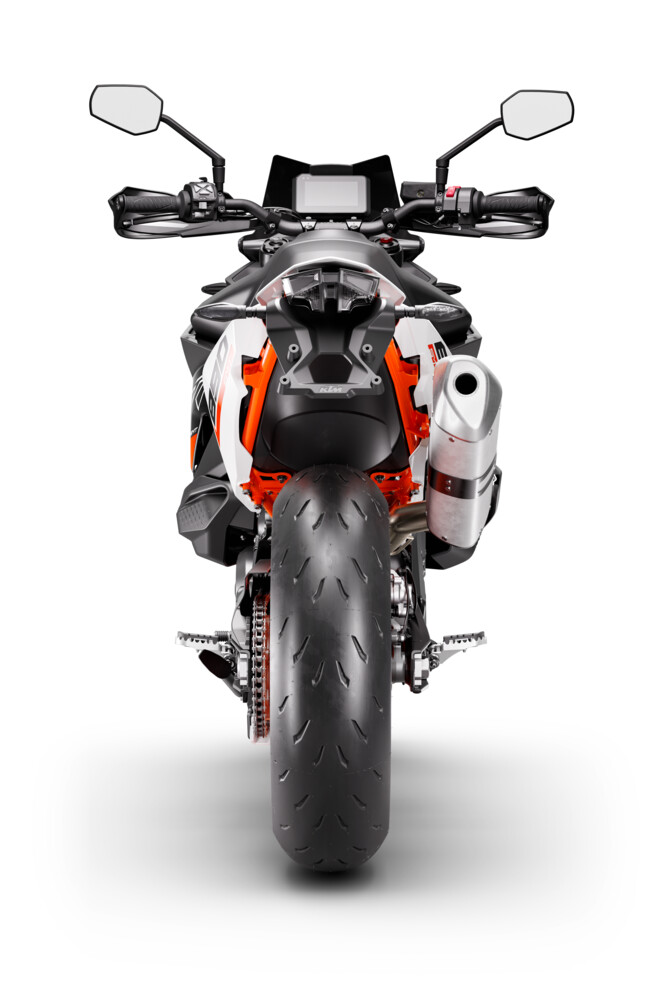
Suspension-wise, the SMT’s 43mm Apex fork and WP Apex monoshock have 180mm of travel front and rear. That compares to 200mm for the standard 890 Adventure, and 140mm front and 150mm rear travel for the 890 Duke. So again the SMT is positioned between the two.
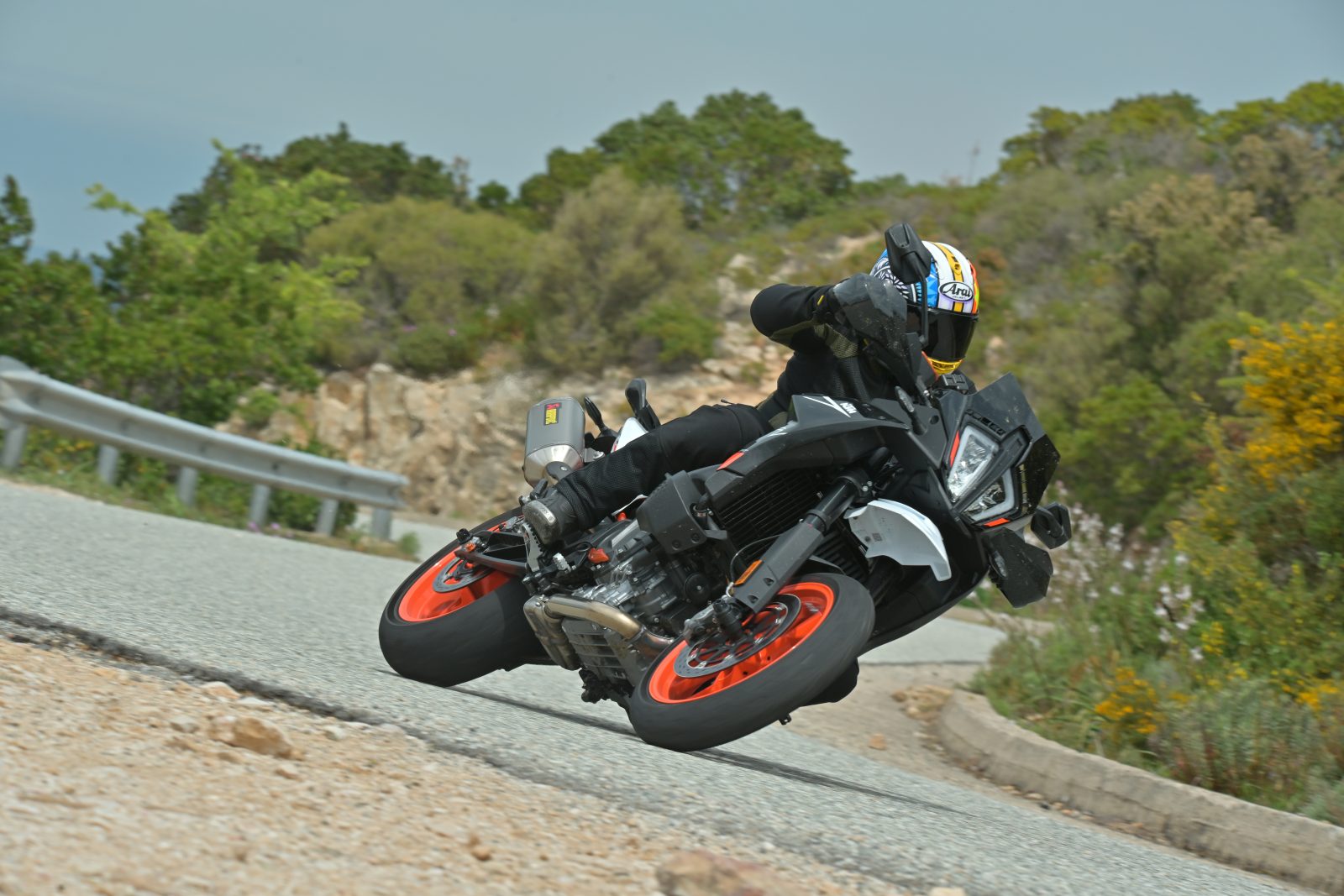
There are 17-inch wheels at both ends and radial-mount KTM-branded calipers and 320mm discs plus Bosch cornering ABS.
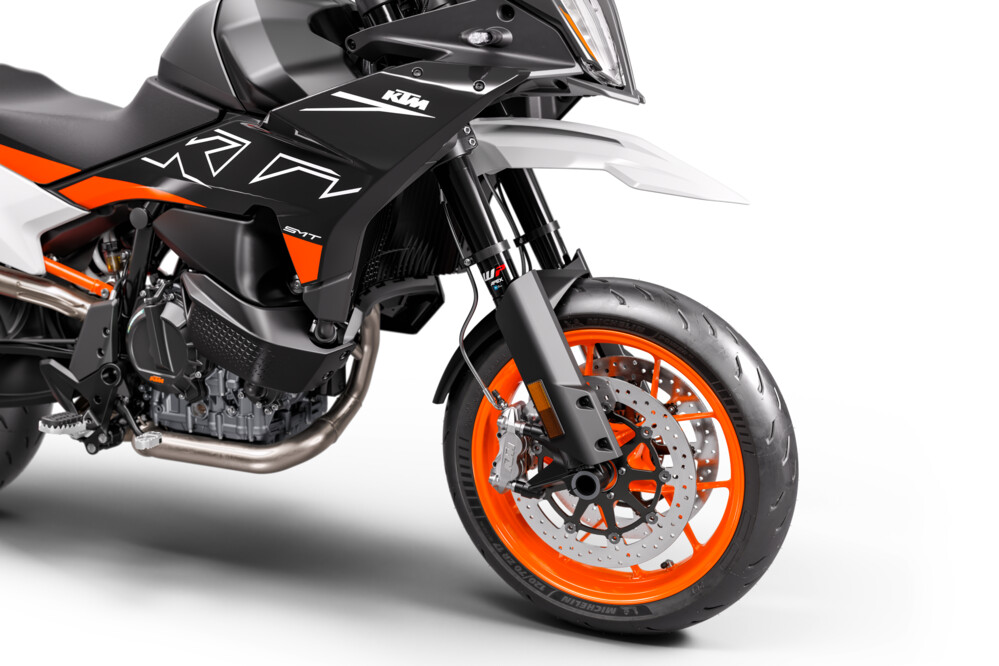
A special supermoto mode allows you to lock the rear wheel while keeping the antilock active on the front. It’s like having a safety net when you get a little too carried away when attempting some backing-in.
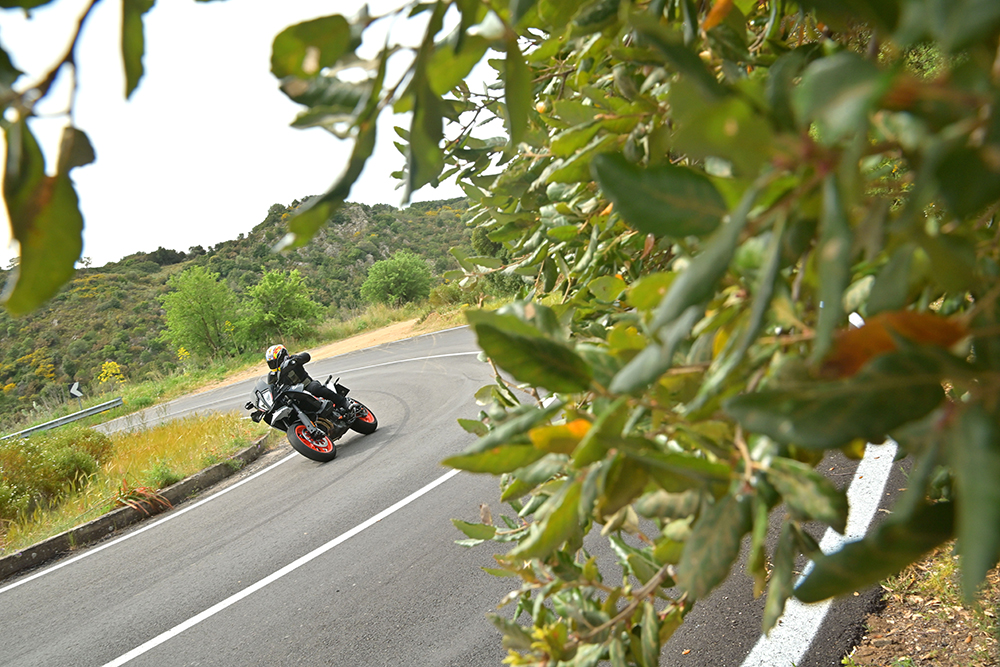
On the road, a fully fueled SMT feels lighter than its claimed 206kg (the 890 Adventure nine kilos heavier) but exudes the same ride quality. It’s not soft and squidgy like a pure sports-tourer but plush, controlled and well suited to, shall we call it, brisk touring.
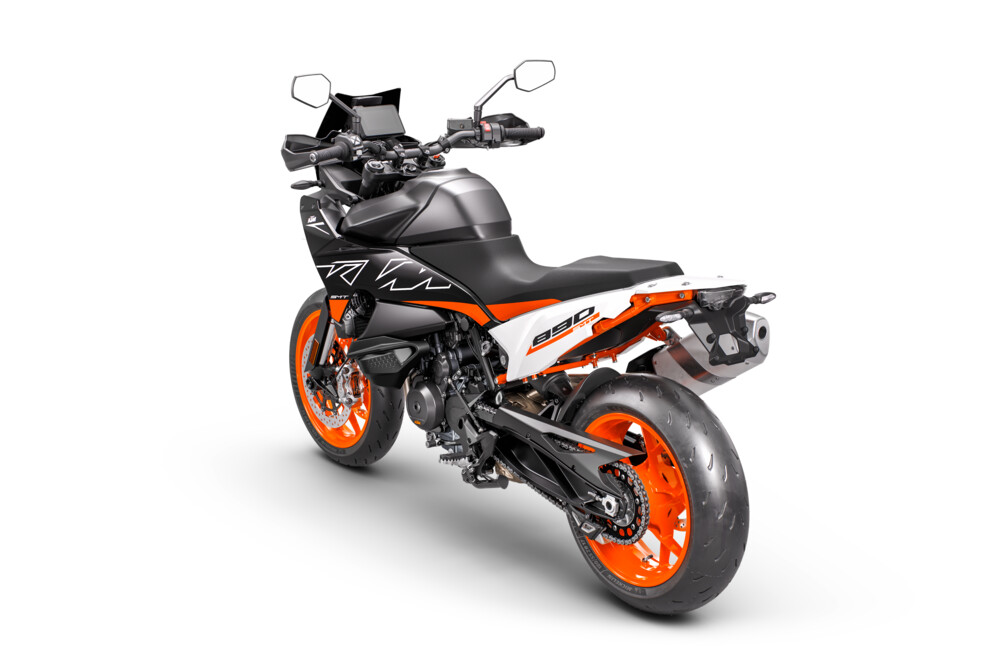
The SMT loves to carry speed through sweepers. It’s a scratcher, yes, but naturally fluid too and nearly as agile as the Duke R, arguably the nimblest middleweight sportsbike of them all. Its wide ’bar and a classic up-front supermoto riding stance encourage you to throw the bike around, while the OE Michelin PowerGP rubber warms up quickly and gives great feedback and grip.
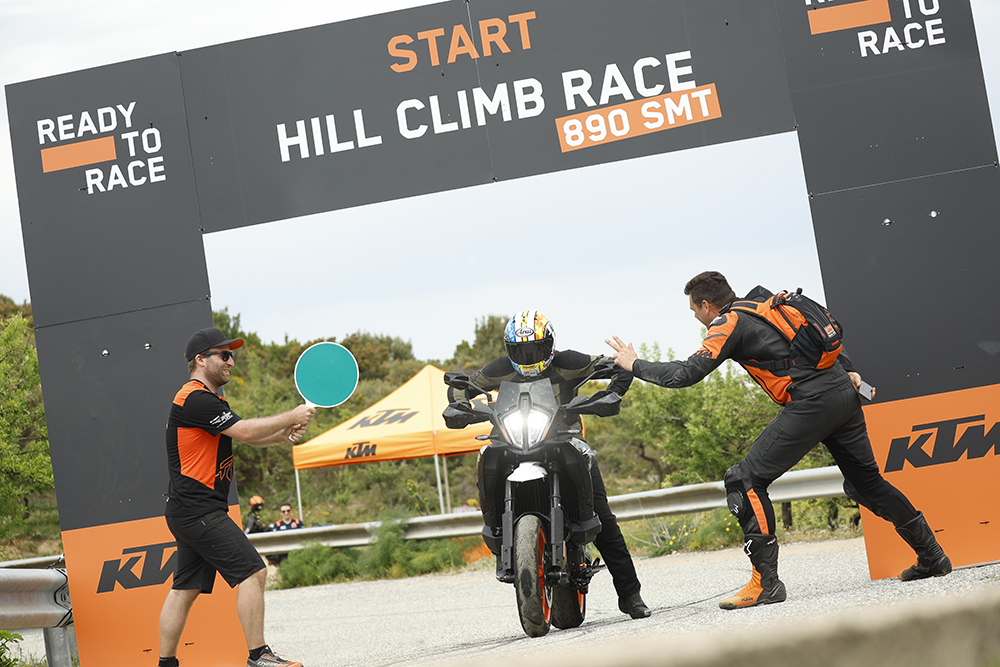
Once you reach the mountains and start to explore the supermoto side of the SMT on tighter turns, you need to tweak the WP Apex suspension, compression and rebound on the front and preload and rebound on the rear.
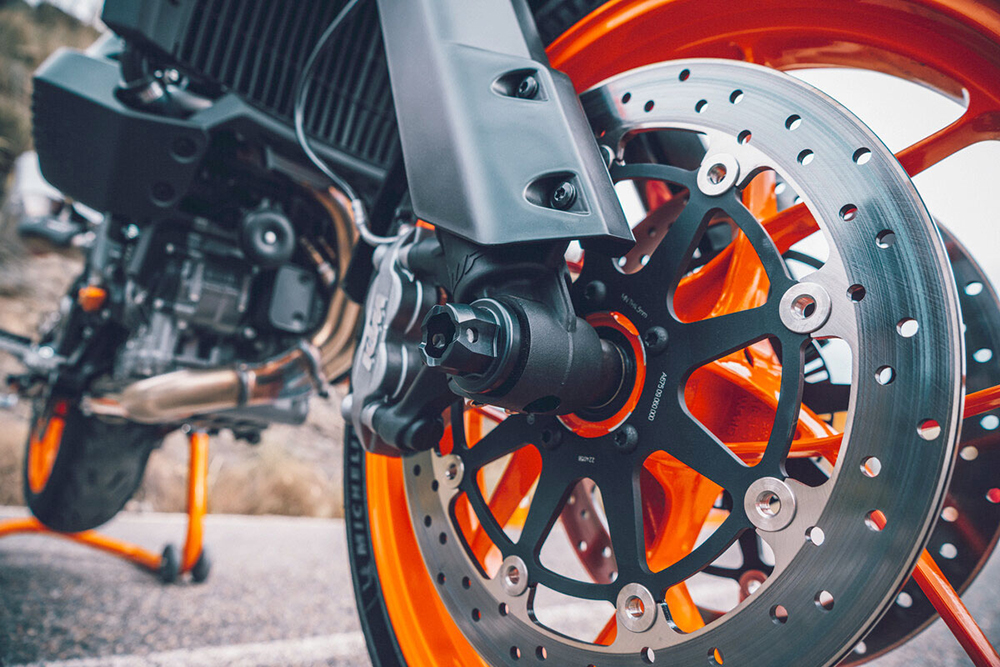
The recommended ‘Sporty’ suspension settings are, in typical KTM style, displayed under the seat, and it takes less than a minute to dial them in via the damping adjusters on the fork tops and a huge remote spring preload adjuster on the rear, which is easy to access.
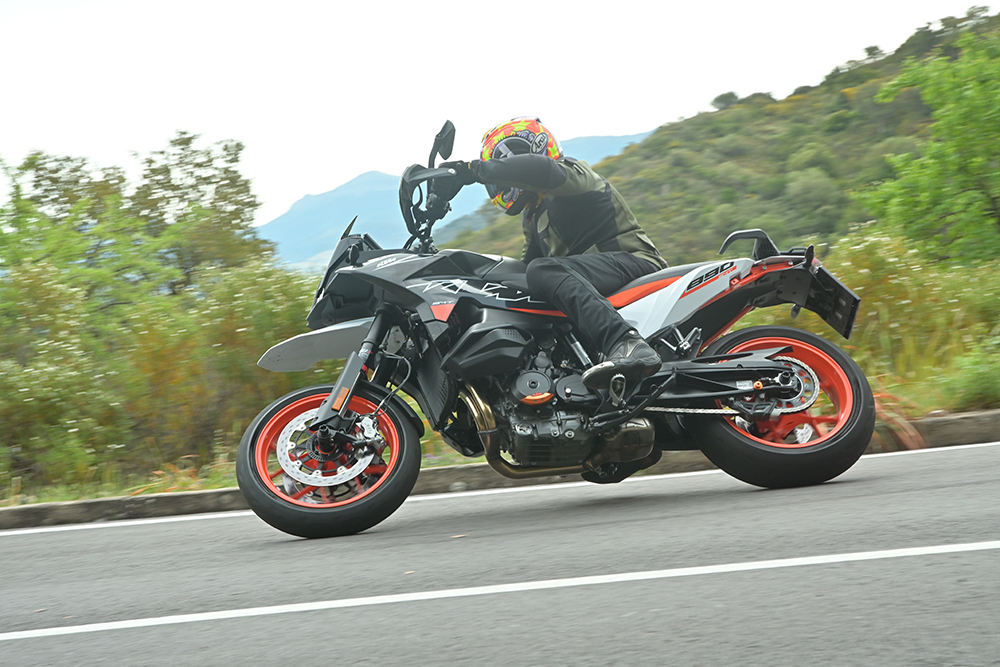
Just a few clicks makes a significant difference, which highlights the quality of the units used, and bring focus – tightening the chassis significantly. In fact, the transformation from capable adventure-leaning sports-tourer to hard-cornering, if rather large, supermoto is supremely effective. The rear doesn’t sit down as much during fast direction changes, while the steering is a little faster and the fork’s stroke more controlled.

Meanwhile, ground clearance is plentiful, meaning you can carry masses of corner speed without worry. On track, with even grippier rubber installed, the ’pegs might come into play but for this type of bike ground clearance is impressive.

The KTM front stoppers are up for the job but lack a little bit of bite on the limit (as well as a bit of Brembo bling at the local pub), but you can have great fun attempting to back the SMT into corners.

Away from the fun, the SMT is accommodating in all key areas. The ’pegs are relatively low giving plenty of leg and knee-room for all but extra-tall riders, and the seat is as supportive as it is sporty and still comfortable after a day in the saddle – if on the high side. At just 172cm, I had to plan where I was going to stop, which might make the lower KTM 890 Duke a better bet for shorter riders.

As well as the engine modes, cornering traction control and cornering ABS, the 890 SMT gets a five-inch TFT dash that’s clear and easy to read and full LED lighting. There’s phone connectivity, including navigation, and an optional Tech pack, which features the Moto Slip Regulator (MSR), cruise control, up-and-down quickshifter and Track pack. After 1500km owners decide if they want all the gadgets; if so, that will be another 650-odd bucks.
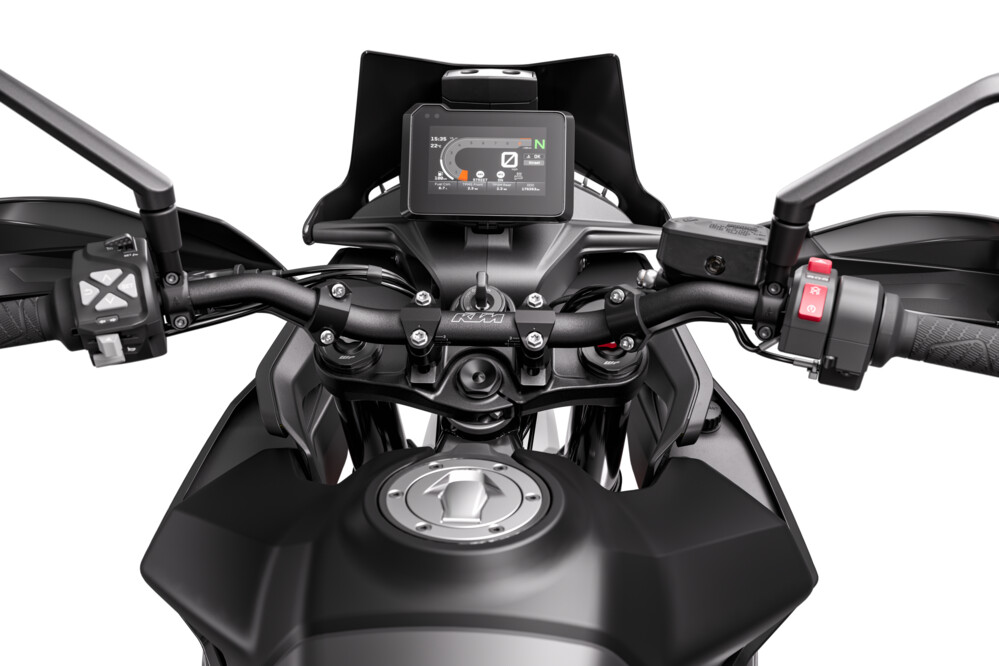
Crucially, despite the passage of time and the advent of electronic rider aids, KTM has stayed faithful to the original SMT’s DNA. On one hand, you have an adventure-oriented tourer that’s easy to live with, is comfortable and roomy and has all-day ride quality. On the other, you have an absolute cornering animal. Simply make the factory-recommended adjustments to the suspension, reduce the rider-aid intervention levels, and you’re ready to stir the pot nicely at your local trackday.
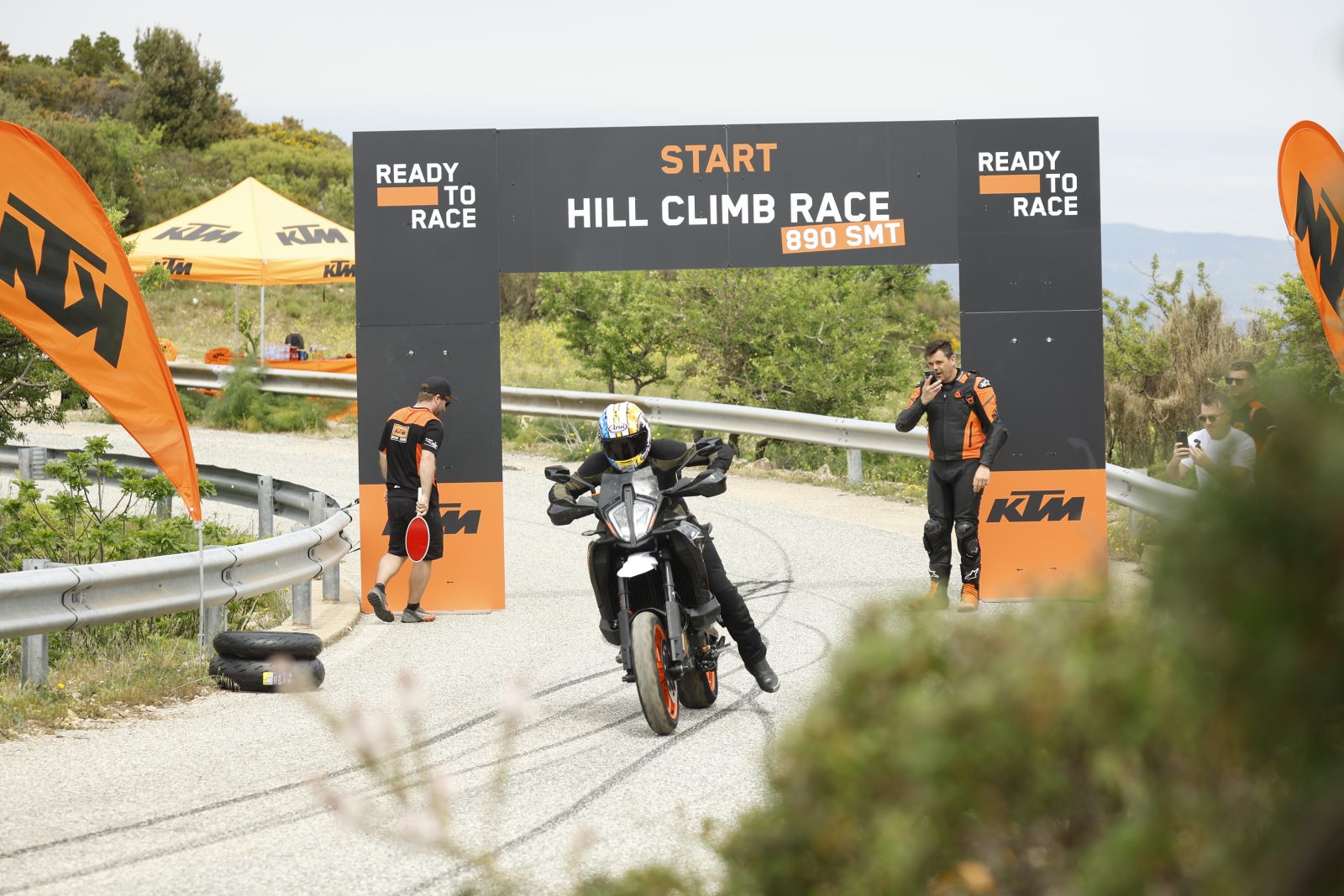
Interestingly, KTM’s website places it in the sports-tourer category which, on balance, feels about right. And given that the 890 Duke R starts at $19,840 (ride away) and the most expensive 890 Adventure R is $25,380 (ride away), the SMT should fit somewhere in the middle. And that feels about right, too.

Test Adam Child + Photography Sebas Romero











